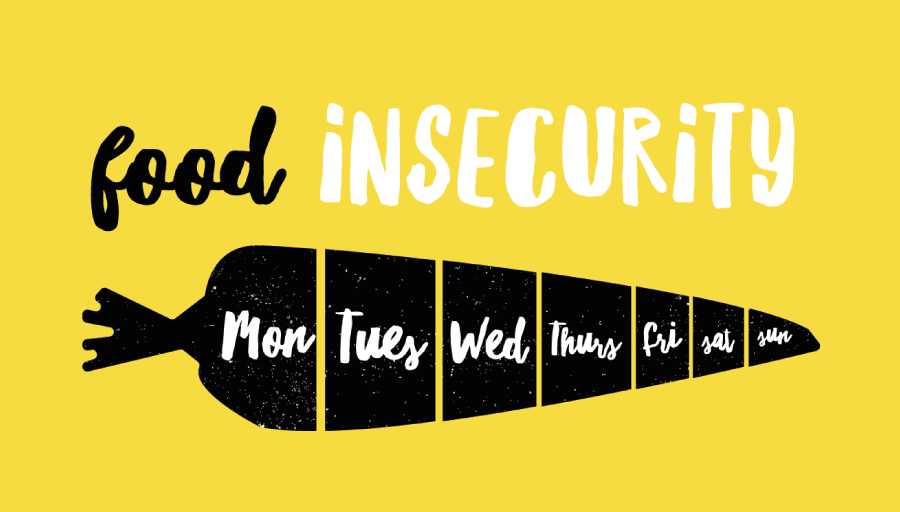
The Aussie lifestyle is also characterized by a love of food and drink, with a diverse culinary scene that reflects the country’s multiculturalism. Barbecues, or “barbies,” are a staple of Australian social life, and Australians enjoy a range of international cuisines as well as local specialities such as meat pies and Vegemite. Though Australia is known for having a high standard of living and, for the most part, access to some of the best foods on earth, you might be surprised to hear that Australia is also a country with food insecurity.
The phrase “food insecurity” refers to the inability of people or households to regularly obtain sufficient and nourishing food. It is a complicated problem that has a global impact, including in Australia. Australia, one of the richest nations in the world, still suffers from food insecurity, with a sizeable percentage of the population finding it difficult to regularly access nutritious food. In this article, we will explore the definition of food insecurity, the causes of food insecurity in Australia, and the impact it has on the Australian population.
What is food insecurity?

When people or households do not have enough food to satisfy their nutritional needs for an active and healthy existence, this is known as food insecurity. It can be caused by various factors such as poverty, unemployment, low wages, inadequate social security, and limited access to food outlets.
According to a report by the Australian Bureau of Statistics, food insecurity affected about 4% of Australian households at some point in the years 2017–2018, which is a growing concern in Australia. However, since not all households suffering from food insecurity may report it, the actual level of food insecurity in Australia may be higher.
Food Insecurity in Australia

Recent studies have shown that there is a rising problem of food insecurity in Australia, affecting about 5% of the population. These figures might understate the severity of the issue, though, as many people and families might be hesitant to ask for assistance out of fear of embarrassment or stigma.
Economic inequality, unemployment, high food costs, and restricted access to healthy food choices in some areas are some of the factors influencing food insecurity in Australia. Additionally, certain populations are more likely to experience it, including low-income families, single-parent homes, and Indigenous Australians.
According to a report by the Foodbank Hunger Report 2021, more than 1 in 5 Australians (21%) have experienced food insecurity at some point in the past 12 months. The report also found that the COVID-19 pandemic has exacerbated food insecurity, with more than one-third of Australians experiencing food insecurity reporting it for the first time due to the pandemic.
There are several reasons for food insecurity in Australia. One of the main causes is poverty. Many low-income individuals and families are unable to afford nutritious food and may rely on cheap, unhealthy options instead. According to a report by the Australian Council of Social Service (ACOSS), over 3 million Australians live below the poverty line, with many struggling to afford basic necessities such as food, housing and healthcare.
Food insecurity has a range of social impacts in Australia, particularly for those who are marginalized or living in poverty. Some of the key social impacts of food insecurity in Australia include:
- Health impacts: Food insecurity can lead to poor health outcomes, including malnutrition, obesity, and diet-related diseases such as diabetes and heart disease. Children who experience food insecurity are also more likely to experience developmental delays and poor academic outcomes.
- Social exclusion: Food insecurity can contribute to social exclusion and marginalization, particularly for those who are already vulnerable or marginalized. This can make it difficult for individuals and communities to fully participate in Australian society.
- Poverty: Food insecurity is closely tied to poverty, and can contribute to a cycle of poverty and social exclusion. Those who are food insecure may struggle to afford basic necessities such as rent and utilities, and may also experience other forms of material hardship.
- Mental health: Food insecurity can have negative impacts on mental health, leading to stress, anxiety, and depression. This can be particularly true for parents who are unable to provide sufficient food for their children.
- Environmental impacts: The food system is a major contributor to greenhouse gas emissions and environmental degradation, and food waste is a significant issue in Australia. Addressing food insecurity while promoting sustainability is an important challenge for society.
- Indigenous health: Indigenous Australians experience higher levels of food insecurity than the broader population, and this can have significant impacts on Indigenous health. Indigenous Australians experience higher rates of diabetes, heart disease, and other diet-related health issues than the broader population.
Causes of food insecurity in Australia

Many underlying factors contribute to food insecurity in Australia, making it difficult for people and households to access or afford enough food to satisfy their basic nutritional needs. These root causes for food insecurity have many facets and are susceptible to a variety of societal, economic, and environmental influences. Some of the main reasons for food instability in Australia are listed below:
- Poverty: Low-income households in Australia are more likely to experience food insecurity due to poverty, which is a major contributor to the problem. Unemployment, underemployment, poor wages, and a lack of access to education and training are just a few of the complex causes of poverty. Lack of money brought on by poverty can make it difficult for families to buy enough food.
- High food prices: Food is expensive in Australia, particularly when it comes to wholesome and nourishing choices. Low-income households may find it challenging to get the food they require to keep a healthy diet as a result. Food waste can also be a result of high food prices, which may cause households to discard food that they cannot afford to eat.
- Limited access to wholesome food choices: Access to wholesome food options is a problem in many communities, particularly those that are rural or remote. The lack of supermarkets and grocery stores, the scarcity of public transportation, and the high expense of transportation may all contribute to this. Food insecurity can be exacerbated by households finding it challenging to keep a healthy diet due to a lack of access to healthy food options.
- Food waste: Up to 40% of Australian food production is lost or squandered, making it a serious issue in Australia. Throughout the food system, including during manufacturing, distribution, and consumption, food waste is possible. By lowering the quantity of food that is available for consumption, food waste can exacerbate food insecurity.
- Climate change and environmental degradation: These two factors can have a significant effect on the availability and production of food. Droughts, floods, and other extreme weather conditions brought on by climate change may harm crops and lower food output. Food insecurity is a result of environmental degradation such as soil erosion and river pollution, which can also lower food output.
- Systemic inequalities: By limiting access to chances and resources, systemic inequalities like racism, sexism, and classism can cause food insecurity. For instance, Indigenous Australians, who have traditionally been marginalised and deprived of their basic rights, are more likely to suffer from food insecurity due to their restricted access to opportunities and resources.
Food insecurity in Australia disproportionately impacts certain groups of people, particularly those who are marginalized or living in poverty. Some of the most impacted groups include:
Indigenous Australians:

Indigenous Australians are one of the most disadvantaged groups in Australia and are more likely than non-Indigenous Australians to face food insecurity. Approximately 20% of Indigenous Australians suffer food insecurity, compared to 4.6% of non-Indigenous Australians, according to the Australian Bureau of Statistics.
The historical marginalisation of Indigenous Australians, the difficulty finding affordable, wholesome food in remote regions, and the effects of colonisation on Indigenous food systems and practises are just a few of the causes of this disparity.
Low-Income Households:
Recent studies have shown that low-income families are also more likely to experience food insecurity, with up to 30% of those making less than $600 per week reporting such a condition. This is a result of Australia’s high cost of living, which includes high housing costs and sometimes leaves little money for other needs like food.
Single-Parent Households:
Another group that is more vulnerable to food insecurity is single-parent households; according to recent research, up to 25% of single-parent households experience food insecurity. This is brought on by the financial burden of raising children alone and the lack of readily available, inexpensive, and wholesome food choices.
The Impact of COVID-19:

In Australia, the COVID-19 pandemic has made food insecurity worse as many households have lost their jobs or experienced revenue declines. Since the start of the pandemic, Foodbank Australia reports that the demand for food relief has risen by up to 50%, with many households turning to food banks and other charities for help.
As a result of some communities and populations being disproportionately impacted by food insecurity, the pandemic has also brought attention to the inequities in the food system. For instance, with limited transportation and high food costs, Indigenous communities in remote regions have encountered additional difficulties obtaining food during lockdowns.
Addressing Food Insecurity in Australia

An estimated 15% of the population in Australia experiences food insecurity at some time, making it a serious problem. Lack of access to enough wholesome food to live an active and healthy existence is known as food insecurity.
Here are some possible solutions to food insecurity in Australia:
- Increase social security payments: To help individuals and families finance essentials like food, the Australian government can raise social security payments like the JobSeeker and Youth Allowance. This may lessen the number of people who are food insecure.
- Improve access to fresh food: Increasing access to fresh food is important because it is difficult to find healthy food in many low-income regions. To increase the availability of fresh and healthy foods, the government can give subsidies to farmers’ markets and induce grocery stores to open in these locations.
- Increase support for food banks and charities: Boost donations to food banks and charities because they are essential in helping those who cannot purchase food. In order to assist these organisations in distributing food to more people in need, the government can boost funding and support for them.
- Address underlying issues: Over time, the number of people who are food insecure can be decreased by addressing underlying problems like poverty, unemployment, and a shortage of affordable housing.
- To guarantee that everyone in Australia has access to healthy, affordable food, it is critical to handle food insecurity. The aforementioned steps can be taken to decrease the number of individuals who are food insecure and enhance Australians’ general health and well-being.
Conclusion

When people or families lack access to enough food that is safe, nourishing and meets their dietary requirements and preferences for an active and healthy lifestyle, it is said that they are experiencing food insecurity. Mild to serious, temporary or persistent, food insecurity can exist.
With an estimated 4 million Australians experiencing food insecurity at some time each year, it is a serious problem in Australia. This includes people and families who find it difficult to purchase healthy food, those who live in remote or regional areas, and those who have limited access to supermarkets and fresh produce.
In Australia, where many people have lost their employment and are struggling to make ends meet, the COVID-19 pandemic has made the problem of food insecurity worse. Food banks and charities all over the nation are seeing an increase in demand for food assistance as a result of this.
Malnutrition, chronic illness, mental health issues, and poor scholastic performance are just a few of the negative effects of food insecurity on one’s health. A multifaceted strategy is needed to address food insecurity in Australia, including expanding access to affordable and wholesome food, helping those in need financially, and promoting neighbourhood-based programmes that advance food security.
